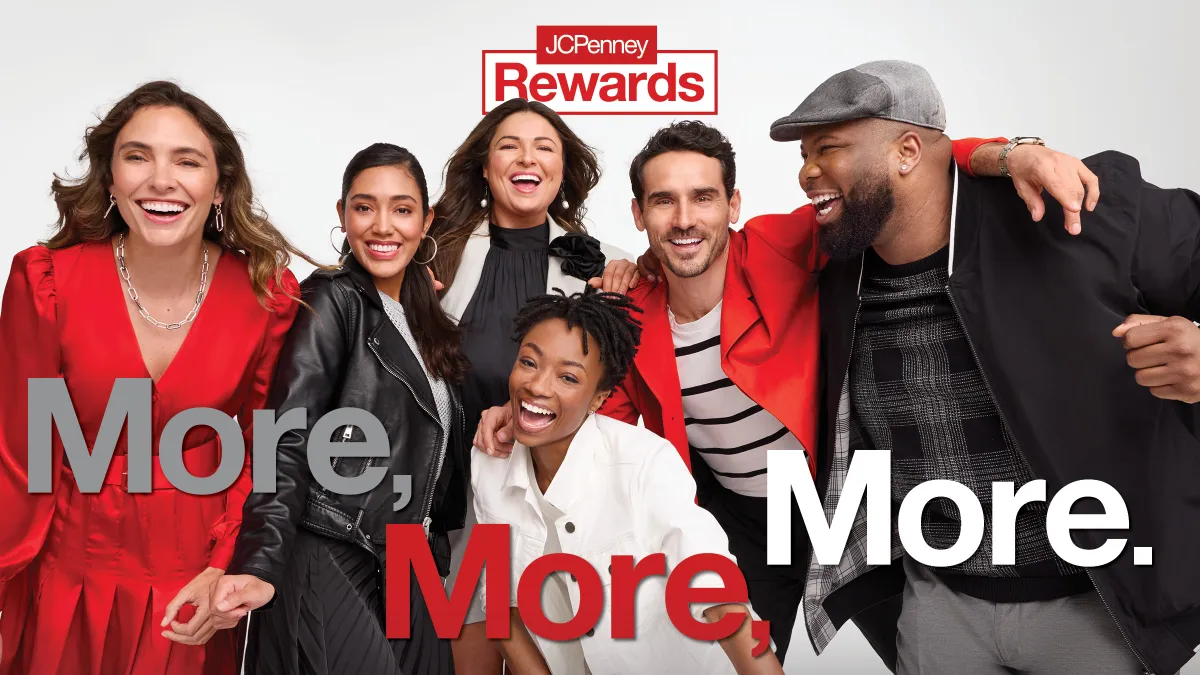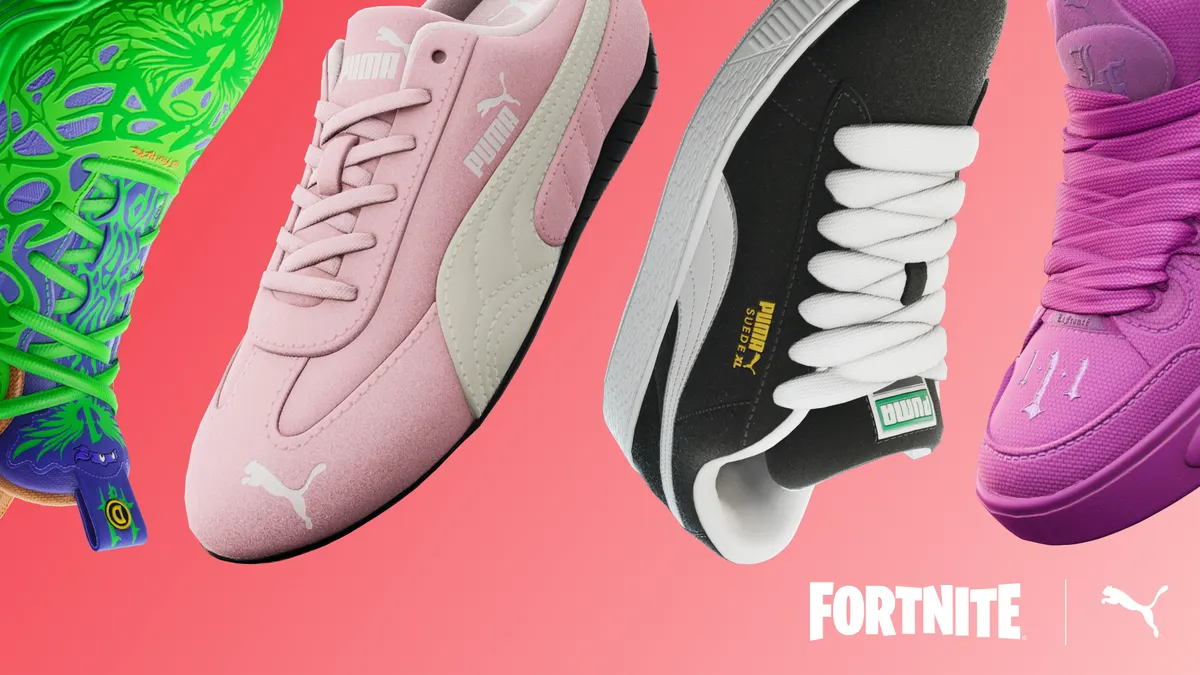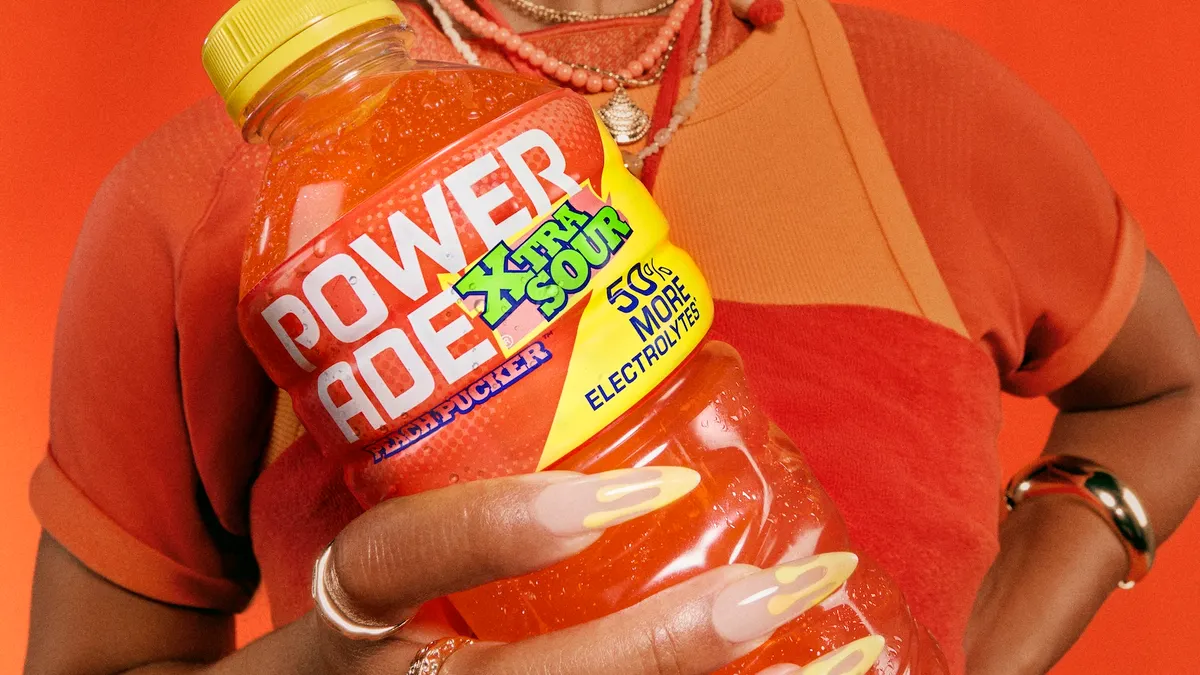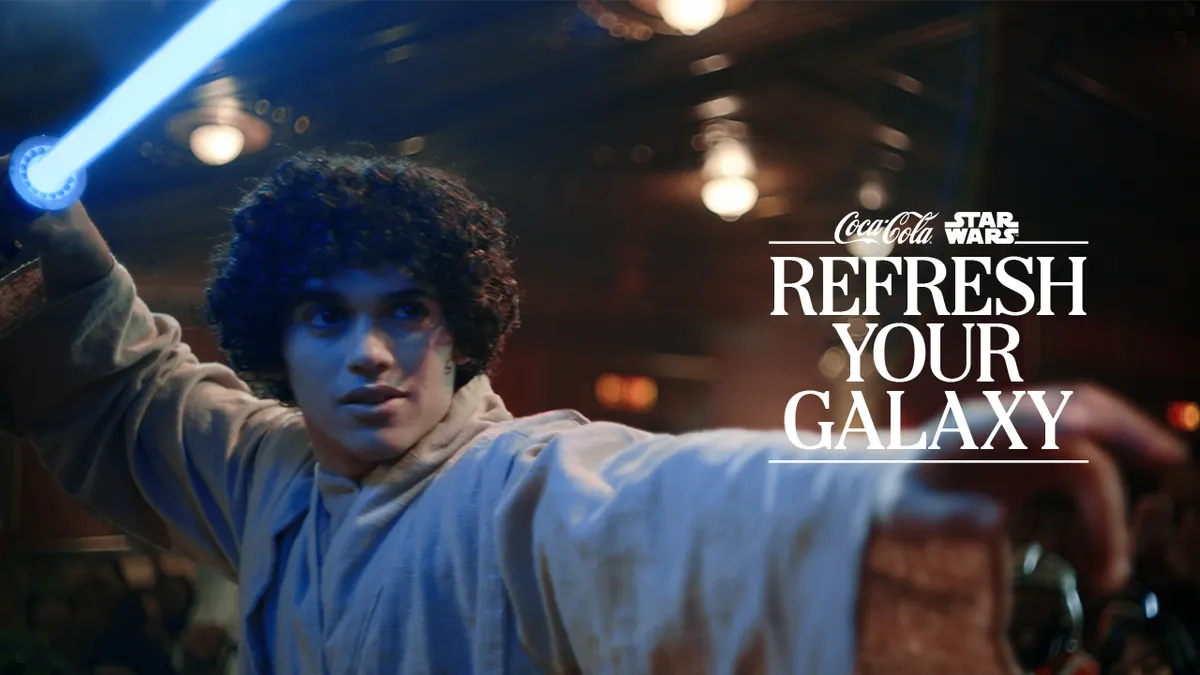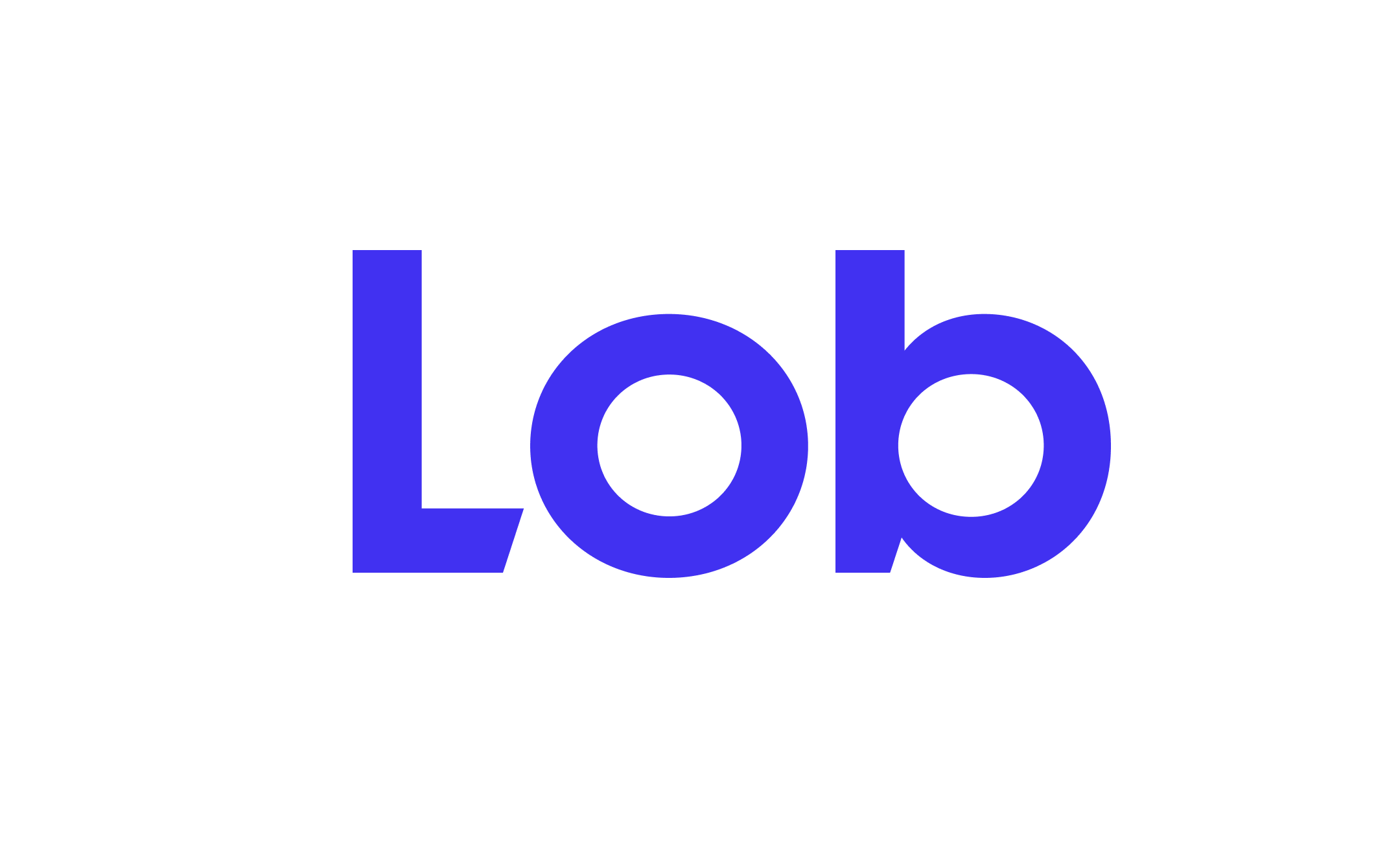JCPenney today (April 17) launched a new loyalty program that could deliver half a billion dollars to its consumers, per details shared with Marketing Dive, representing another major investment by the retailer following the $1 billion turnaround plan it announced last year.
With the launch of a revamped JCPenney Rewards and Credit Program, the retailer is delving into one of the four core areas it established with last year's launch of its "Make It Count" brand positioning, alongside accessible fashion, community support and a commitment to positive change.
The rewards program, which already counts 20 million members that shop at JCPenney an average of five times per year, looks to make every dollar and every trip to the retailer count, with faster point accrual and other ways to earn CashPass points — a new reward structure reminiscent of the one popularized by rival Kohl's.
The free-to-join program guarantees $20 in CashPass rewards, with a $10 reward earned after each $200 of spending and a faster rate of accrual for JCPenney credit cardholders. To promote the launch, the retailer is hosting a More, More More Event on May 4 that challenges shoppers to make a three-point shot — a feat accomplished by brand ambassador Shaquille O'Neal only once during an NBA game — into a shopping cart for a chance to win more rewards. A related social media hashtag challenge gives consumers a chance to meet the pop culture phenom.
Katie Mullen, who was promoted from JCPenney's chief digital and transformation officer to chief customer officer last April, detailed the rewards program and associated marketing plans during a press briefing and interview with Marketing Dive.
This interview has been edited for clarity and brevity.
MARKETING DIVE: It's been a few months since JCPenney announced its billion dollar plan. What has the marketing strategy been since then?
KATIE MULLEN: What we did in September, from a marketing perspective, was use the reinvestment moment to re-establish our brand value proposition, talking more explicitly about the four pillars of our brand, which are making fashion truly accessible, being genuinely rewarding, standing with our communities and doing for others what we want for ourselves, given our history as "the Golden Rule store."
September through December was really about making sure that the customer was seeing and hearing from us about accessible fashion. We spent a lot of our internal time in terms of content creation and dollars in terms of amplification really making sure we were getting credit for the amount of fashion, newness and innovation, both from an inclusion standpoint and from a value standpoint. We were talking about making every body count, and really making a statement about inclusion and the range and breadth of our customer needs.
What you'll see from us starting now is much more of a balanced message about rewarding and standing with our communities. We felt like we had to play through that fashion message, reestablishing some expectations for the consumer, before we could start to add more messaging complexity. So now you'll hear our fashion plus rewarding plus standing with our communities in a much more explicit way. This was the launching point for us to start talking about rewarding [customers].
How do you market a loyalty program and use all the physical and digital levers at your disposal?
MULLEN: Anytime you do anything related to rewards or loyalty, it's incredibly complex. We had to go build more than 250 unique and distinct sets of assets — those are the ones that our team built, as opposed to influencer assets or creator content. The messaging is unique to the specific audiences that you have, and you have to do credit-specific messaging to credit audiences and general market messaging to other audiences.
The last three months has really been about making sure that we were getting the relevant message in front of the right customer through the right channels. We are doing a broader-based amplification of this message to make sure that customers who may not have considered us in some time actually hear and see some of the benefits of the additional simplicity that we're adding into our [rewards] structure. We know that our model, and the fact that we have lots of different promotional offers and deals, can at times be harder for the customer to understand what value they're getting.
We use this as an opportunity not only to speak specifically to discrete audiences … but also to go out and do a broader-based national marketing push to make sure that we are helping customers understand the revived and recommitted JCPenney. You'll see us show up in national media and in paid social, as well as organic and influencer, and then all of our owned channels as well.
Moving forward, how will loyalty feed into your efforts, especially at a time when marketers are dealing with increased signal loss?
MULLEN: We've had a loyalty and credit program for so long that it actually predates a lot of the modern learnings around [personal identifiable information] and what you're trying to do there. As we are relaunching, you'll see things like the birthday reward, which is an opportunity for us to give a CashPass reward to every member on their birthday. It also is an attempt to go back and rectify some of the data challenges that we had from people who enrolled in our program 10, 15, 20 years ago that we haven't necessarily worked with to keep all of their account information up to date.
There are some moments where we have both a "customer engagement" objective and an "improving the quality of data" objective. But if you have somebody's email address that's from the AOL days, we probably need to make sure that we're still communicating with you via the right mechanism. Cleanup of first party data is not the reason that we did this, but certainly, as a marketer, I'm delighted for that group data quality.
We know when we are communicating with our customer, with the latest and greatest information, we see about a two-times effectiveness increase in our targeted messages to those customers because we're talking to them about what's most relevant to them. It always starts with the customer benefit: If we can stop talking to you about stuff you don't care about, and start talking to you about stuff you do, you're inevitably going to have a better experience with us.
You've spoken previously about a private company like JCPenney being able to focus more on long-term engagement than the short-term results required by public companies. How do you achieve the right balance of short- and long-term efforts?
MULLEN: I spent the last few days traveling with our chief merchant. I'm responsible for telling the story of all the merchandise that her team selects, designs and builds. We were talking a lot about hitting the right balance between brand messaging and either product-lead messaging or offer-lead messaging. For us, that is really a regular conversation.
I sit with my teams every week, we look at performance data — marketing response, click-through rates, all those types of things — on our messages that are more brand oriented, versus the ones that are more acquisition oriented or performance oriented. We are optimizing or re-optimizing weekly on whether we have that right balance.
All marketers like to have their hands on the steering wheel; making minute adjustments every week is probably not the right answer. But it is a question that we take really seriously, because we have to make sure that we are continuing to do the things that add engagement and relevance in the broader sets of conversations, but also making sure we're pulling customers down the funnel and not just stopping with relevance or cultural marketing only.



